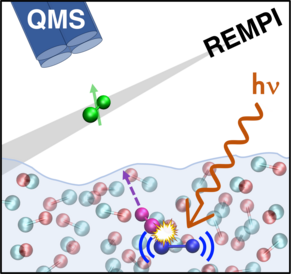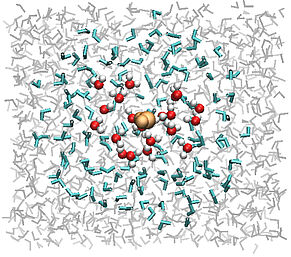Unraveling Molecular Processes in the Interstellar Medium
In the context of the interstellar medium, the molecular complexity cannot be explained through gas-phase processes alone. It is widely acknowledged that the ice mantle, comprising not only water but also various other molecules (CO, N2,...), plays a pivotal role in generating small molecules, which serve as the building blocks for more complex compounds, especially prebiotic molecules like amino acids. Molecular simulations emerge as a valuable tool for tackling this challenge, not only providing molecular data that can enrich databases and refine astrophysical models, particularly those incorporating gas/grain interactions, but also proposing realistic mechanisms to explain paradoxical observations, such as the abundance of the gas phase in dense and cold regions of the interstellar medium. Moreover, simulations offer a granular description of these processes, elucidating fundamental mechanisms that may be observable in laboratory experiments.
In this astrophysical axis, our investigations have led to the following major results:
- Calculation of the frequency shifts of dangling OH bonds in water ices induced by the adsorption of Polycyclic Aromatic Hydrocarbons.(HAL: hal-02447448v1)
- Determination of adsorption energies (physisorption and chemisorption) of several small molecules or radicals on crystalline and amorphous water ices. (HAL: hal-03245237v1; HAL: hal-03579914v1; HAL: hal-03614163v1)
- Identification of an indirect desorption process following the photoexcitation of CO ices. (HAL: hal-04364305v1; See PCMT highlight)


